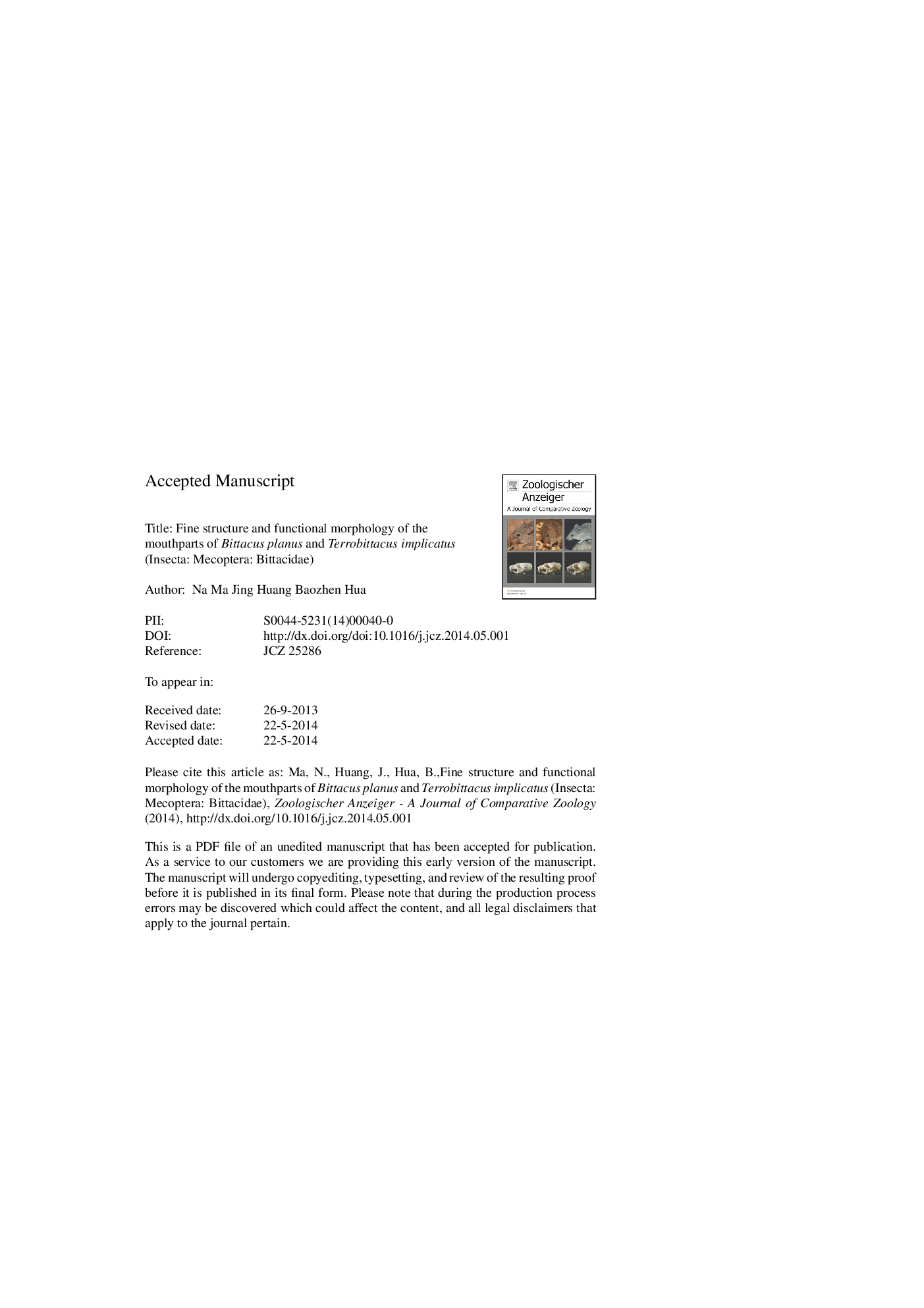| Article ID | Journal | Published Year | Pages | File Type |
|---|---|---|---|---|
| 5896381 | Zoologischer Anzeiger - A Journal of Comparative Zoology | 2014 | 23 Pages |
Abstract
The Bittacidae are unique in Mecoptera for their adults being predaceous. However, their mouthparts have not been well documented for functional morphology to date. Here, we investigated the mouthpart morphology of the hangingflies Bittacus planus Cheng and Terrobittacus implicatus (Huang & Hua) using scanning electron microscopy. The mouthparts are of the mandibulate type and situated at the tip of an elongated rostrum. The labrum is greatly elongated, roughly twice as long as the subquadrate clypeus. The epipharynx is furnished with a row of basiconic sensilla arranged evenly as a median band extending from the apex to the base. The mandibles are slender and elongated, bearing a sharp lateral and a small mesal tooth. The maxillae are well developed, each consisting of a partially sclerotized cardo and a stipes, a hirsute galea and a lacinia, and a five-segmented maxillary palp. The sensillar pattern on the distal segment of the maxillary palp differs slightly between the two bittacid species. The labium is composed of a postmentum, a prementum, and a pair of two-segmented labial palps. The feeding mechanism of bittacids is briefly discussed in combination with the mouthpart morphology and their feeding habits.
Related Topics
Life Sciences
Agricultural and Biological Sciences
Animal Science and Zoology
Authors
Na Ma, Jing Huang, Baozhen Hua,
